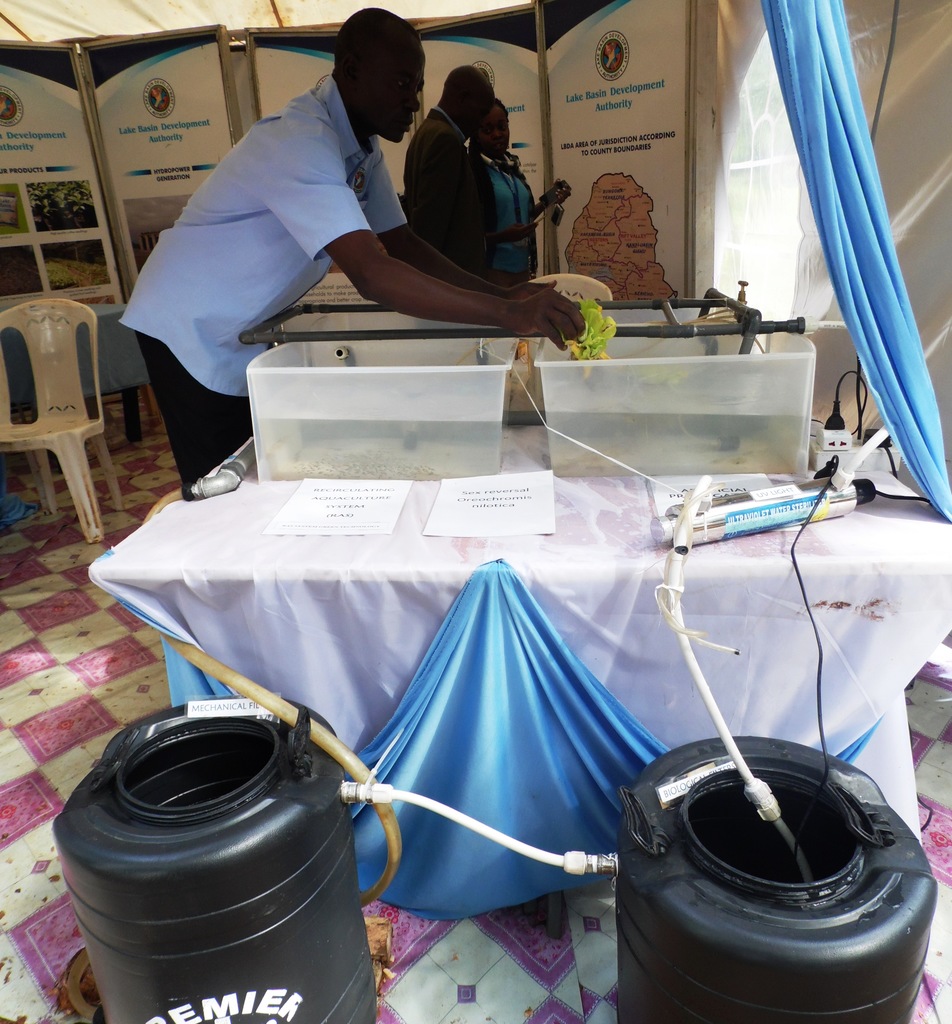Backyard tank fish farmers, who do not have access to rivers and streams, can purify toxic water in less than five minutes for recirculation using a Sh75,500 recycling kit.
Michael Spoo of Lake Basin Development Authority said the sequencing recirculation aquaculture system (RAS) kit enables home based aquaculture farmers reuse water instead of draining it away.
Capacity
The kit can comfortably recycle 200 litres of water in an aquaculture tank holding about 300 fish in three to five minutes.
“One needs not border a river to rear fish. Technology answers everyone and almost everything. The recycling process has been found to remove more than 95 per cent of chemical and solid impurities. There is no reason for even urban farmers to claim they do not have access to sufficient water to rear fish,” he said.
In normal practice, free flowing water from rivers and streams is diverted into fish ponds without sterilisation. Only filtration of large particles takes place at the inlet. But the RAS kit helps farmers improve the quality of water for better yields.
Water purification process
First in the purification process is the filtration tank. It has a mechanical filter that removes solid particles, which may include feed remains, dead weeds, sticks, stones faeces, among others.
The next step is the removal of toxic chemicals from the water. Compounds like ammonia cause irritation and stress to fish.
“During excretion and respiration, fish release ammonia and carbon dioxide. Ammonia dissolves in the water to form ammonium ions and other components which are toxic. Although carbon dioxide does not dissolve completely in water, traces of its compounds in other forms of carbon cannot miss. They have to be removed,” he said.
Nitrosomonas and nitrobacter bacteria in the next purification tank break down the nitrogen in ammonia into forms that can be reutilised in the tank by algae and other important organisms.
Sterilisation
Water is piped out of the purification tank by a submersible pump to a steriliser.
The water is passed through a UV-steriliser with a pipe to kill any dangerous micro-organisms. The small chamber uses the natural sunlight’s rays.
“The steriliser is selective. The rays are regulated in range to only eliminate dangerous micro-organisms, Spoo said during the Kakamega County Agricultural Society of Kenya Show.
The water is piped back to the culture tank. A small pump is used to bubble air in the water.
Extra equipment
The entire system is powered by a small generator.
Other additional equipment in the package include an incubator for handling hatching eggs, feed ingredients and a small refrigerator.
Water purification should be repeated daily to avoid accumulation of waste.
Spoo can be reached on +254713979642

















Comments powered by CComment